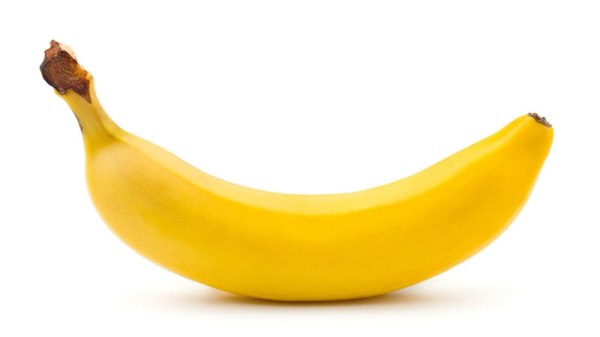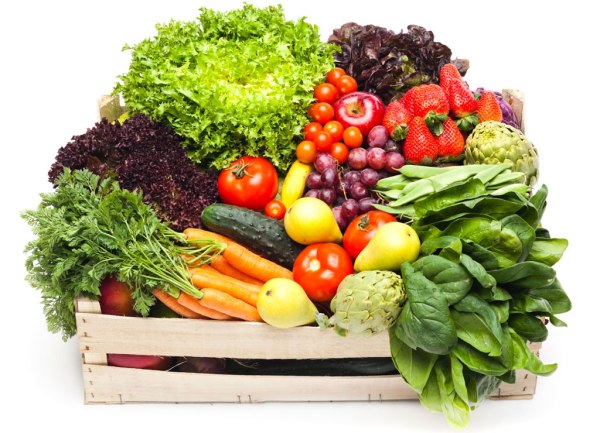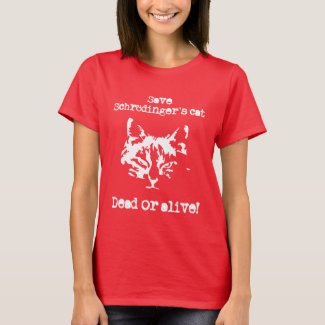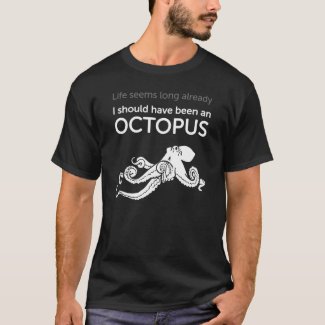The Frankenstein syndrome
You’re at the grocery store, doing the weekly shopping when you come over a little peckish. Considering something for the road, you see a packet of Twinkies:
It seems an innocent enough treat, if a bit calorie rich. But on a hunch you turn the packet over, start reading the label and find the following:
Enriched Wheat Flour (ferrous sulfate, niacin, thiamine mononitrate, riboflavin and folic acid), sugar, corn syrup, water, high fructose corn syrup, vegetable and/or animal shortening (containing one or more of partially hydrogenated soybean, cottonseed or canola oil, and beef fat), dextrose, whole eggs, 2% or less of: modified corn starch, cellulose gum, whey, sodium acid pyrophosphate, baking soda, monocalcium phosphate, salt, cornstarch, corn flour, corn syrup solids, mono and diglycerides, soy lecithin, polysorbate 60, dextrin, calcium caseinate, sodium stearol lactylate, wheat gluten, calcium sulfate, natural and artificial flavors, caramel color, sorbic acid, E102 (Yellow 5), E129 (Red 40)
“Whoa. That’s a lot of ingredients.” you say to yourself. “And how do you even pronounce ‘sodium acid pyrophosphate’? Or ‘calcium caseinate’? And that ‘thiamine mononitrate’ sounds really nasty. Better off picking up some fruit and have a healthy natural snack. Bananas are good and filling, I’ll get some bananas instead.”
All natural banana
Bananas are a good tasty snack. And I won’t mention the highly unnaturally selection having being performed upon it to end up with the cultivated version of the wild banana berry*.
But consider the ingredients list for a natural banana, if such a list was legally required:
Water (75%), sugars (12%) (glucose (48%), fructose (40%), sucrose (2%), maltose (<1%)), starch (5%), E460 (3%), amino acids (<1%) (glutamatic acid (19%), aspartic acid (16%), histidine (11%), leucine (7%), lycine (5%), phenylalanine (4%), arginine (4%), valine (4%), alanine (4%), serine (4%), glycine (3%), threonine (3%), isoleucine (3%), proline (3%), tryptophan (1%), cystine (1%), tyrocine (1%), methionine (1%)), fatty acids (1%) (palmitic acid (30%), omega-6 fatty acid: linoleic acid (14%), omega-3 fatty acid: linoleic acid (8%), oleic acid (7%), palmitoleic acid (3%), stearic acid (2%), lauric acid (1%), myristic acid (1%), capric acid (<1%)), ash (<1%), phytosterols, E515, oxalic acid, E300, E306 (tocopherol), phylloquinone, thiamin, E101, E160a, 3-methylbut-1-yl ethanoate, 2-methylbutyl ethanoate, 2-methylpropan-1-ol, 3-methybutyl-1-ol, 2-hydroxy-3-methylethyl butanoate, 3-methybutanal, ethyl hexanoate, ethyl butanoate, pentyl acetate, E1510, natural ripening agent (ehtylene gas)
That list is even longer than the Twinkie one. And just as full of scary-sounding things like ‘tocopherol’ and ‘2-hydroxy-3-methylethyl butanoate’. Also, ‘ash’? Really? And ‘ehtylene gas’ – isn’t that what they run those welding machines on?
Now, I don’t want to scare you off ever eating bananas again – that’d be silly. Rather, the point I’m somewhat laboriously making is that chemistry is complicated. And organic chemistry even more so. Our naturally occurring foods often contains more weird chemicals than our man-made varieties.
The Frankenstein syndrome
There seem to be a prevalent mistrust of anything synthetic. A fear of plastics, chemical additives, man-made fibres, metallic alloys and other manufactured compounds. I’d like to label it a phobia (chemophobia would be the correct term), but perhaps it’s not a completely groundless fear? We’ve after all heard about countless incidents involving man-made chemicals and substances: factory emissions, illnesses from synthetic materials used in buildings and fabrics, allergic reactions to newly discovered chemical compounds and so on. It does really seem like whenever we invent something, something bad follows.
It’s called the Frankenstein syndrome – a fear of our own creations – and it seems to be widespread in modern society. But why are we so ready to mistrust new inventions? Are we really that bad inventors/scientists/chemists that we constantly and over and over again release monsters into the wild?
It could be argued that this phenomenon is just a variant of the old Luddite hatred of everything new, but I think there’s more to it than that. In addition to the mistrust of the unknown – which, to be fair, is pretty reasonable – there is a fear of loss of control. Once we’ve created something new, we effectively let go of it and let it run rampant. And even though the creator(s) usually swears by their new product and assure us it’s benevolent, observers from the outside of the lab are less convinced.
And so the mistrust and fear start off rumours and urban myths. Like the ones about the Brilliant Blue FCF colouring agent used in certain sweets. Rumours would have it that the – rather unnatural-looking and therefore surely harmful – food colouring induced hyperactivity in kids that had enjoyed some blue M&M’s. And even though numerous studies showed that this was not in fact the case, those rumours refused to die and parent kept on going through the bags of M&M’s to rid them from blue ones before their kids got their hands on them.
Denialism
There is also an element of denialism at work here. Healthy living is now a fairly common lifestyle choice and people striving to eat organic food without artificial chemicals. This is all a Good Thing, but the notion that we could somehow live chemical-free lives is a false one – even with the rather incorrect definition of ‘chemical’ meaning ‘synthetic’. There is no place on Earth today that is not already affected by man-made chemicals. The water, air and soil is everywhere treated with a cocktail of assorted compounds, ranging from the beneficial to more harmful ones.
Of course, the level of artificial contamination will vary somewhat and the choice to add your own in form of synthetic fertilisers and herbicides/insecticides/fungicides will affect this level further. But be in no doubt – there are no produce to be had on this planet that are free from artificial chemicals.
The point
Ok, so what is my point? Should we panic or should we just resign and give up? Is it the end of the world or is it nothing to worry about?
Well, neither really. Artificial chemicals might not be the end of the world as we know it and they are certainly not automatically evil, but it would make sense to keep an eye out. Some of the chemicals we’ve released have been rather nasty indeed, especially when in form of different metals. We still remember the effects of DDT and mercury compounds and even today PCB is present in the environment. Clearly a more stringent view on how we test man-made chemicals before releasing them into nature or put them in our food has been required.
But let’s not go overboard. A lot of what we see in the ingredients list for our groceries are compounds readily found in nature. As always, more knowledge about what’s what and what could potentially be harmful is required. Combined of course with a will to actually learn and accept new findings. So we need a little less of the “I don’t care what they say; I’ll never trust these additives!” or “All newly invented things are always great and should be welcomed with open arms” and more of “Ok, let’s see if there are any good studies on this.” Less dogma and more research.
After all, knowledge is a good thing. Make sure you get yours; that’s an additive we cannot do without.
I’d like to thank James Kennedy for the inspiration for this post – and for painstakingly listing the ingredients for a bunch of natural products.
* Just for the record – this is what a natural wild banana berry looks like:

















Explain this bananaberry situation. Do you eat the seeds? It looks like a pomegranate. Does it taste like a banana? WHAT IS HAPPENING?
My doctor said I need to eat more real food and less chemically false food. I assume she’s just jealous I’m turning into an awesome android robot person. (I’m being sarcastic. Yes, I listened to my doctor and am trying to be better about my food choices.)
Am I the only person in the world that can’t stand Twinkies? I feel they leave a weird film in your mouth after you eat them that tastes vaguely like gasoline smells. It’s not something I seek out in a snack cake.
LikeLike
Some wild banana variants are pretty sweet tasting, but full of hard seeds. As we don’t eat the seeds, we started a long process of finding/creating variants with smaller/fewer seeds. After countless generations we succeeded and the results are the cultivated banana variants we have today.
LikeLike
That’s actually kind of awesome, isn’t it? (As I love bananas and HATE seeds in EVERYTHING, I’m really glad they did this!)
LikeLike
“Chemically false food”? That’s not a very scientifically correct statement. And from a doctor as well. Tsk tsk tsk.
Additives aren’t always bad and not always artificial. But yes, making your own food from fresh produce will allow you greater control over what you put in your food. Especially when it comes to sugar and salt.
(Also, I don’t think additives is the way to turn yourself into an awesome android person.)
LikeLike
Oh, I made up the “chemically false food” thing. I have a bad habit of eating all frozen meals because I’m lazy. She says, “Amy. THOSE ARE NOT REAL FOOD!” and sighs.
When I make my own food it’s so much more delicious. I just sometimes give up. I don’t always want to cook. I get home. I’m tired. I want to eat NOW. *stomps foot*
Well, how, exactly, will I become an android, Andreas? HOW?
LikeLike
Even frozen ready-made food is real food. Just not freshly made.
One solution could be to cook in batches and freeze the leftovers. That way you’ll have quick meals ready when you get home and control of what’s in it. Plus it usually tastes better than the bland food you buy in stores that need to appease everyone’s tastebuds.
LikeLike
I know. I know. I need to do that. I always SAY I’m going to do that. Then I don’t.
Move here and yell at me, will you? Thanks. You’re the best.
LikeLike
Never had a Twinkie in my life. It’s some sort of sponge cake, right?
Perhaps that oily aftertaste comes from the petroleum used for the colourings?
LikeLike
I’ll bring you some NEXT MONTH OMG IT’S NEXT MONTH I CAN’T EVEN
Yep, that’s totally the taste. Petroleum. Like if you accidentally eat your lip gloss. It’s a sponge cake. Yellow cake with creme in the middle. Ding Dongs (don’t even laugh, that’s what they’re called) are better.
LikeLike
Oh, I can’t have any. Sorry. They have beef in Twinkies and I don’t eat mammals. But thanks for the offer!
(It’s really next month, isn’t it? That’s truly splendid!)
LikeLike
Oh, crap, I forgot! I will search for non-gelatin-containing American treats!
NEXT MONTH NEXT MONTHHHHHH!
LikeLike
Never looked at the ingredients in Twinkies before, but I’m disappointed at the lack of guar gum. That’s my favorite.
LikeLike
Guar bean powder? I guess they didn’t need it, since it’s sort of an airy sponge cake.
LikeLike
It’s a sponge cake with a creamy filling. Guar gum is a thickener to keep fillings from soaking into the surrounding cake while it sits on the shelf for years. Yum.
That might be what the corn starch and cellulose gum are for.
LikeLike
Good point. Perhaps they’re focusing on corn starch instead?
LikeLike